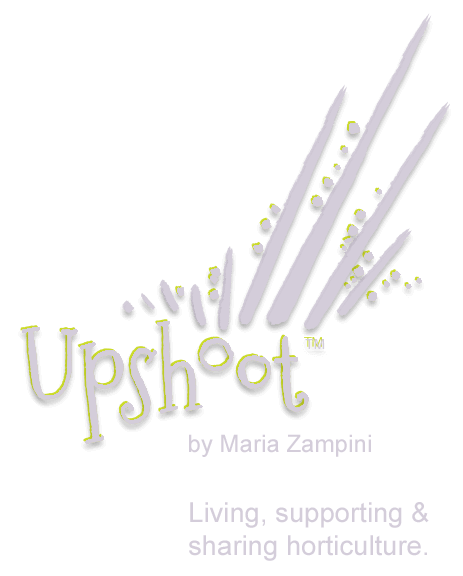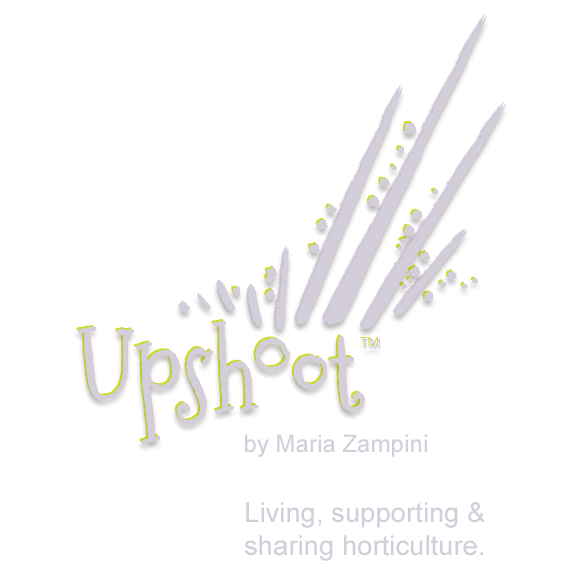<
 |
It was Benjamin Franklin who said, “If you fail to plan you are planning to fail.” Crafting a plan and setting a course in a five-year written plan, for both personal and business goals, is a key success strategy that Rick Robinson of Robinson Nursery in Amity, Oregon, firmly believes in.
“It is amazing what happens when you write things down and then visit them daily,” Rick
Rick and his wife Roxanne started the nursery as a part-time venture in 1979, and in the 1990s the timing was right to commit to it full time. They have since been joined by their two sons, Josh and Chris, both of whom have business degrees from Linfield College.
Each son has gravitated toward a different area of focus in the business, doing what they each appear to do best. From the beginning, Chris seemed production minded while Josh was more sales driven. Chris readily took on responsibilities of shipping, inventory and this past year became nursery manager. After working in the fields, Josh took a job as customer service manager before recently being promoted to sales manager.
|
Robinson Nursery Founded: The nursery was started part time in 1979 by Rick and Roxanne Robinson. Location: Amity, Oregon Production acreage: 650 acres; 400 in nursery stock and 250 acres in corn and wheat. 1.5 acres of new greenhouses completed this spring with another 1.5 acres scheduled for construction this fall. Primary products: 90 percent of nursery stock is ornamental and shade trees, 10 percent shrubs; 60 percent bare root and 40 percent containers. Primary customers: The majority of Robinson’s customers are located in the eastern half of the United States. They are mainly growers; two-thirds of them will field plant Robinson Nursery liners while the other one-third will pot the liners into containers. Key staff: Chris Robinson, nursery manager; Josh Robinson, sales manager; Robbi Kirkpatrick, office manager; Gabriel Mendoza, production manager; Alberto Padilla, propagation manager; Diana Ceja, purchasing manager. |
 The GrowReady Liners are grown in air pruning containers prior to netting and shipping. The nursery also sells containerized liners. |
Collaborative effort
For years Rick wanted to design a way to ship product that is ready to plant right off the delivery truck. He was looking for something that did not create waste and extra effort by the customer. Together, the father and sons team started looking for a solution.
Rick had told his sons about a machine that some nurseries used to net the root balls of B&B plants including boxwood, arborvitae and taxus. Instead of using string over top of the burlap, a net secured it. They thought about adapting this process by taking their container grown liners, removing the pot, netting the soil mass and shipping it.
Consequently, Chris read about a piece of netting equipment that might fit their idea – a Schrauwen Netting Machine. He contacted the maker in Germany and found a distributor 20 miles from their farm. Midas Nursery Solutions rented the machine to the Robinson’s so they could run a test at the nursery. After one day of use, they were sold on its abilities and purchased the machine.
This new netted liner product created by Robinson Nursery is a slick package that has several benefits compared to traditional container liners. First, the netting minimizes the shipping weight. For instance, a typical 3-gallon container weighs about 1 pound while netting only weighs 13 grams, Chris said. This weight difference allows the nursery to fit approximately 250 more liners per truck, which reduces the shipping cost per liner.
 Robinson Nursery uses a Schrauwen Netting Machine to wrap the root balls of its liners. The cost of shipping is reduced and the mesh is plantable and biodegradable |
When stacking and shipping containerized liners, trunk wraps are required to protect plants from being rubbed and scratched by the pot rims. The netted product eliminates rough edges and the need for trunk wraps. Plants can be stacked in the truck directly on top of bare root plants with no damage. The actual process of netting the plant takes relatively the same amount of time to install as putting a trunk wrap on a plant, therefore it is not adding any more labor to the product.
Secondly, customers can take the liners right off of the truck and to the field or potting area where they can be direct planted with the biodegradable mesh intact. The net does not need to be removed or cut open before planting or potting.
 |
Robinson Nursery currently has two netting machines – one nets 3 gallon or smaller size pots and the other has been custom fitted to net both 3- and 7-gallon pots.
Josh and the sales team developed a low-key branding campaign for the nursery’s netted liners, marketed as the GrowReady Liner program. A healthy word-of-mouth campaign has helped increase the program’s success, as well. Happy existing customers have led to new customers for the nursery.
“Our customers are very important to us. If we deliver for them they will naturally spread the word of our product,” Josh said.
To get GrowReady Liner products to market more quickly, the nursery is using almost 4 acres of greenhouse space. This production strategy not only increases growth rate, but it means a higher percentage crop take as compared to growing the plants outside. It also allows the Robinsons to control the growing environment with heat and fertilization, providing a way to give the plants what they need, when they need it.
The GrowReady Liner program has been a real bright spot for Robinson in an otherwise dreary time for the industry. This new way of growing and delivering product to their customers has allowed them to stay engaged with their existing customers, and the excitement around this program has brought forth new customers.
The nursery offers a diverse range of products in the GrowReady Liner program. In particular, the program has strived to offer the type of plants that have been hard to find during the economic downturn. Popular items include Ginkgo, American Beech, a tree form Limelight Hydrangea and top-grafted lilacs.
“We offer trees grown on a larger spacing which allows for better branching,” Chris said.
Another way the Robinsons are controlling their own destiny is by propagating everything in-house. They feel this fosters stronger quality control and gives them the ability to offer larger quantities of hard-to-find material. These factors have led the nursery to experience strong growth despite the economy, and has helped counteract any decrease in traditional bare root sales, the family said.
Robinson Nursery is on a modest growth plan. Chris and Josh are in the middle of creating a virus certified program to facilitate shipping more items outside the United States. The family is also expanding its greenhouse production space this year by 3 acres. And the GrowReady Liner production has been expanded to allow shift-up for a full 7-gallon program, which will be ready to debut in 2015. This new size will target 1-inch trees and provide customers with the same advantages as the current sizes in the GrowReady Liner program.
Image © Vaclav Volrab | Dreamstime.com
– Originally published in Nursery Management magazine, writtten by Maria Zampini, August 7, 2013
]]>


